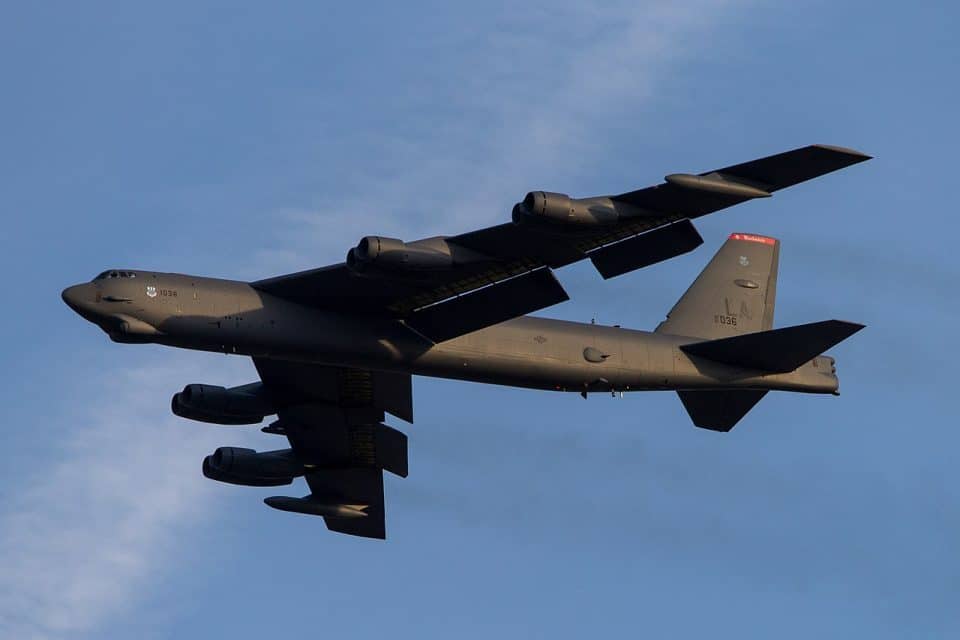Aerospace
Why Is the B-52 Bomber Being Relaunch by the US Air Force?

The B-52 bomber, which is one of the oldest and most iconic aircraft in the US Air Force fleet, has undergone several rebuilding and modernization programs over the years to keep it relevant and effective in modern warfare.
The latest effort to rebuild the B-52 is known as the B-52 Commercial Engine Replacement Program (CERP), which involves replacing the bomber’s existing Pratt & Whitney TF33 engines with new, more fuel-efficient engines. The CERP aims to improve the B-52’s range, fuel efficiency, and overall performance, while also reducing maintenance costs and increasing the aircraft’s lifespan.
History of B52 Bomber
The Boeing B-52 Stratofortress is a long-range, subsonic strategic bomber that has been in service with the United States Air Force (USAF) since the 1950s. The B-52 has played a significant role in US military operations and has been involved in numerous conflicts, including the Vietnam War, the Gulf War, and the War in Afghanistan.
The original B-52 design featured eight turbojet engines and a crew of six. The aircraft had a range of over 8,000 miles and could carry a maximum payload of up to 70,000 pounds. The B-52 also had a unique ability to fly at high altitudes and could operate at speeds of up to 650 miles per hour.
The United States is bringing back the B-52 bomber for several reasons, including its effectiveness as a long-range, versatile strategic bomber that can deliver both conventional and nuclear weapons. Here are a few reasons why the B-52 remains a critical component of the US military’s arsenal:
- The B-52 has a range of over 8,000 miles, making it a valuable asset for long-range missions that require the delivery of large payloads over great distances.
- The B-52 is capable of carrying nuclear weapons and has been a key component of the US nuclear deterrence strategy since the 1960s.
- The B-52 has also been used for conventional strike missions, including in conflicts such as the Gulf War and the War in Afghanistan.
- The B-52 is a relatively low-cost option compared to newer bomber aircraft such as the B-2 Spirit or the B-1 Lancer. The aircraft has undergone several modernization efforts over the years to keep it effective and relevant, which has helped extend its lifespan and reduce maintenance costs.
The CERP program is being led by the US Air Force and involves several major defense contractors, including Boeing, which is responsible for the overall management and integration of the program, and Pratt & Whitney, which is providing the new engines.
Based on the defensive strength of Russia and China. The US has prepared all of its categories of defense weaponry, including its bomber planes, in case a war breaks out at any moment. This will be a breakthrough for the US and one of the rare instances in aviation history where a 50-year-old aircraft is being restored and introduced for use in the military. According to the most recent improvements, the aircraft’s thrust power comes from a Rolls Royce engine as well.
The CERP is expected to extend the B-52’s service life by at least 30 years and keep it in active service until the 2050s. The first test flight of a B-52 with the new engines was completed in March 2021, and the program is expected to be fully implemented on all B-52s by 2030.

Aerospace
When Ratan Tata was denied entry to the airfield at the Aero India show, he waited

During our visit to Aero India 2019, we had the unexpected opportunity to see Ratan Tata at the event, which was a thrilling moment for us. However, there was a surprising hiccup when the security staff didn’t allow him to enter due to a lack of a security pass.
Despite this, he remained calm and patiently waited for about 20 minutes until a member of the Tata team brought him the required pass, after which he calmly proceeded inside. It was a humbling sight, showcasing his composed demeanor even in such situations.
Ratan Tata ji is not only a renowned industrialist but also a trained pilot, holding a pilot’s license. In 2007, he became the first Indian civilian to fly the F-16 Falcon during the Aero India show in Bangalore—a proud moment for the nation.
His passion for aviation extended beyond flying, as he played a key role in shaping India’s aerospace industry. Under his leadership, Tata ventured into manufacturing and maintaining aerospace components while upholding its legacy of quality. Notably, Tata’s collaboration with Airbus to develop and manufacture the C295 aircraft is a testament to its growing influence in the sector.
-

 Aviation2 months ago
Aviation2 months agoMicrosoft Flight Simulator Raises $3 Million to Bring Back the An-225 Mriya
-

 Airlines2 months ago
Airlines2 months agoQatar Citizens Can Travel to the United States Without a Visa
-

 Defence2 months ago
Defence2 months agoWhich Country Has the Largest Fleet of Fighter Aircraft?
-

 Airlines1 week ago
Airlines1 week agoDAMAC Air: Dubai’s New Luxury Airline Offers Free Flights for Registration
-

 Airlines1 week ago
Airlines1 week agoAir India to Launch aircraft maintenance training institute in Bengaluru
-

 Airport2 months ago
Airport2 months agoWestern Sydney Airport Welcomes Its First Plane After 6 Years of construction
-

 Aviation2 months ago
Aviation2 months agoDid you know ? Once Boeing 747 carried 1088 passenger in 1991
-

 Travel1 week ago
Travel1 week agoThis country tops visa rejections in the popular Schengen countries








